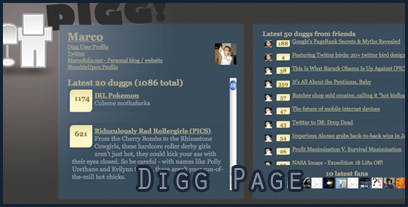There is nothing like getting back to the basics, even when it comes to an experienced web designer. Learning new website creation techniques can be difficult, as there is a lot of unorganized, inaccurate information on the web. But you don’t have to worry, because the following article will help you with that. In the paragraph below will be some of the best website development tips you’ll need to get the balling rolling fast, hard, and where the readers want it.
Speed is vital online, so be sure your pages load quickly. If someone visiting your site has to wait a while in order for a page to load, it’s likely they will click off your site and leave. They probably won’t return.
Don’t make your page sizes any larger than necessary. Not all website visitors have blazing connection speeds and will get frustrated and lose interest if your site takes a while to load. You do not want your page viewers to be stuck waiting for every page to download, or they may end up abandoning your site.
Have a simple front page. Visitors to your site will decide quickly from your front page if they want to stay to look around or leave just as quickly. Be descriptive, but try to do so in just a few words.
Search Engines
Do not use frames on your website. Frames are not optimized for most search engines. While they improve your site’s looks, any information contained in a frame is not indexed by search engines. If search engines are unable to see some of the key information presented by your site, your ranking is bound to suffer. When this happens, you won;t get a lot of visitors.
When designing your site, use ALT tags when adding images. ALT tags are used to provide a description of the images on your site, which will help any visually impaired visitors. ALT tags can also help out if your images link elsewhere. And most importantly, search engine bots need to see the descriptions through ALT tags in order to help your search engine ranking.
Get in the habit of testing early and often. Check the usability and user interaction of your site as soon as possible while designing the site. Never stop testing and improving.
Your code is already created in development platforms, but classic text editors may be more reliable. Site features are designed within the platform, and then the generated code is pasted in. However, if you wish to ensure that the code is free of errors, and be directly involved in the process, utilizing a text editor is a better option.
When you know about web design, get down to practicing what you know. This is important so that you will understand well how each step fits into the bigger picture and becomes easier for you to handle. You don’t want to spend a lot of time learning and not retain any of the information.
Begin by creating smaller websites that allow you to gauge your strengths and weaknesses, and how to improve upon both. Start with an index page that introduces your business and products, then use what you learn from that page’s feedback to build additional informational pages.
Start building the first page of your site with a template to keep the process simple and straightforward. Starting simple will allow you to add more advanced techniques as you expand your site, giving you a chance to learn each one by one.
It may be necessary to enlist the help of a professional site designer, or perhaps a close friend, who has some experience in the matter. This will help you become a professional yourself.
Open Source
Do remember that website design does not need to be costly. Though there are very good tools out there for making great websites, there are also ones that do the job for considerably less financial input on your part. There are open source options for software that can function just as well as the retail counterparts. You can save lots of money by using open source software.
Always avoid captchas unless you are using them for user registration. The captcha triggers a response from the viewer that he or she now has to perform complex problem solving just to view a simple webpage. Unless this visitor is already a dedicated follower, they’re probably just going to click their browser towards another corner of the Internet.
Ask another person to test your site out to make sure it works well as you go along. Have someone test each new feature that you add. You might not think much of a video that loads slow, but another set of eyes can give a differing perspective. Always look to others for outside and unbiased opinions.
You always want to make the security of the website your top priority. If you handle things like credit card information on your site, it may be your best bet to purchase an SSL certificate. In addition, talk to your host about the security features they might have available.
White space, or space that is unused and empty, is truthfully beneficial to a website, so don’t think your site has to be chock full of pictures, graphics and content. Having some free space within your site improves its readability. This will cause your visitors to more easily read and retain the knowledge provided to them.
The article you just read emphasizes that no matter how good you are at website development, there’s always time to bone up on the basics. There are many sources that claim to show the basics, and deciding where to look can be difficult. With the tips from this article, you have a good base to start on your web design path.

